Idea by
Radu Vit, Hmenya Henrietta
Call for ideas 2018
Emergency Neighborhoods
Emergency Neighborhoods

As the world’s refugee population continues to grow, the ever increasing need for solutions to integrate them in their new adoptive communities continues to be pressing. The following proposal focuses on the issues, urban refugees face in Europe and how we can best address them not only from a housing standpoint but also from a social one.
The first part of the project consists of developing a multistage toolkit than can be easily implemented on a given city to determine the best practices for new interventions tailored towards facilitating the integration of refugees in their new local communities.
As the main study case, the city of Karlsruhe Germany has been chosen specifically because of it being one of the main arrival points for refugees in Germany during the height of the 2015 crisis.
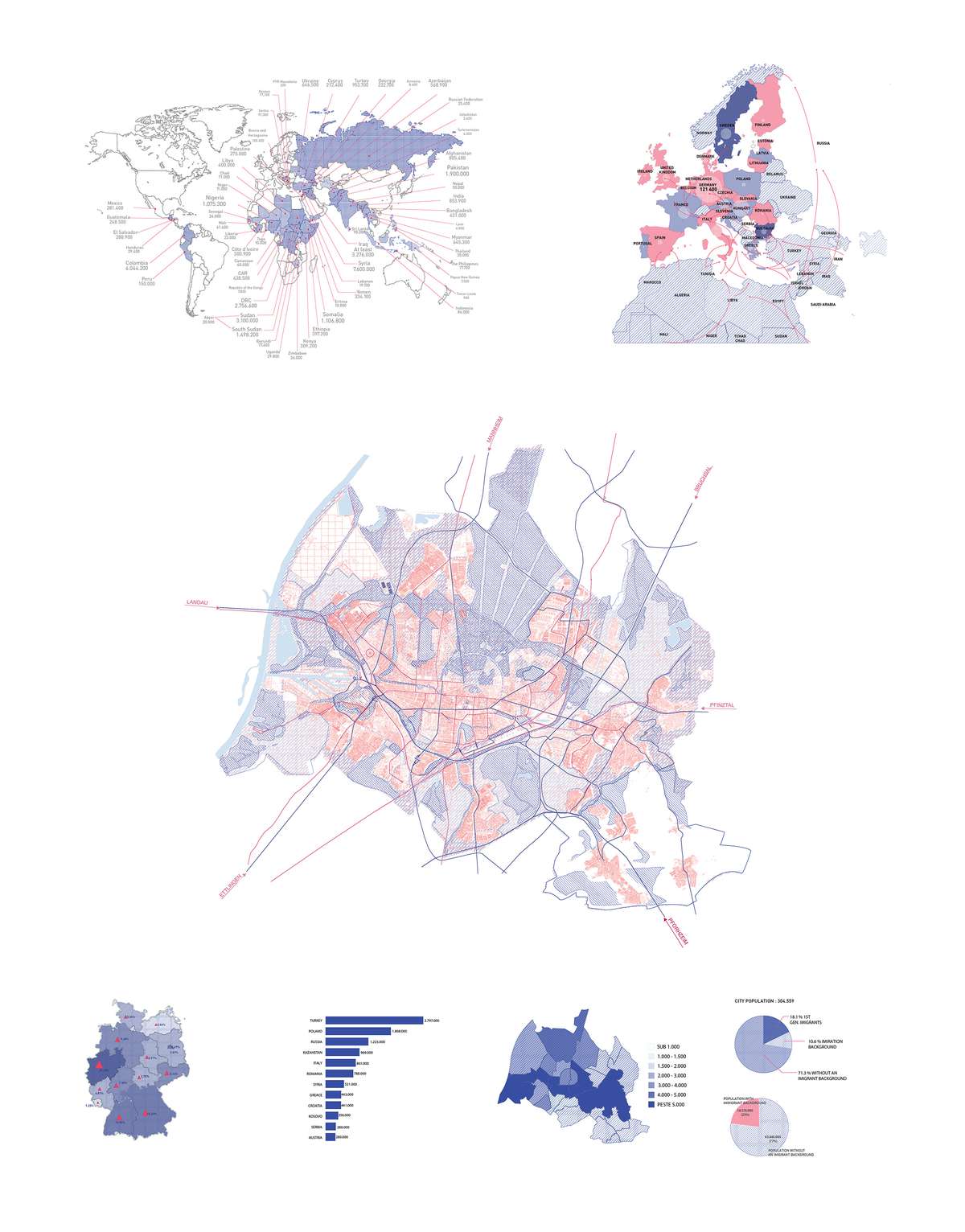
By the end of 2016 the number of forcibly displaced individuals has reached 65.6 million people with 22.5 million of refugees seeking aid in other countries. Germany is the largest recipient of asylum seeker in Europe with a total number of 1,268,845 seeking refuge inside its borders. Karlsruhe being one of the biggest receiving cities in the country.
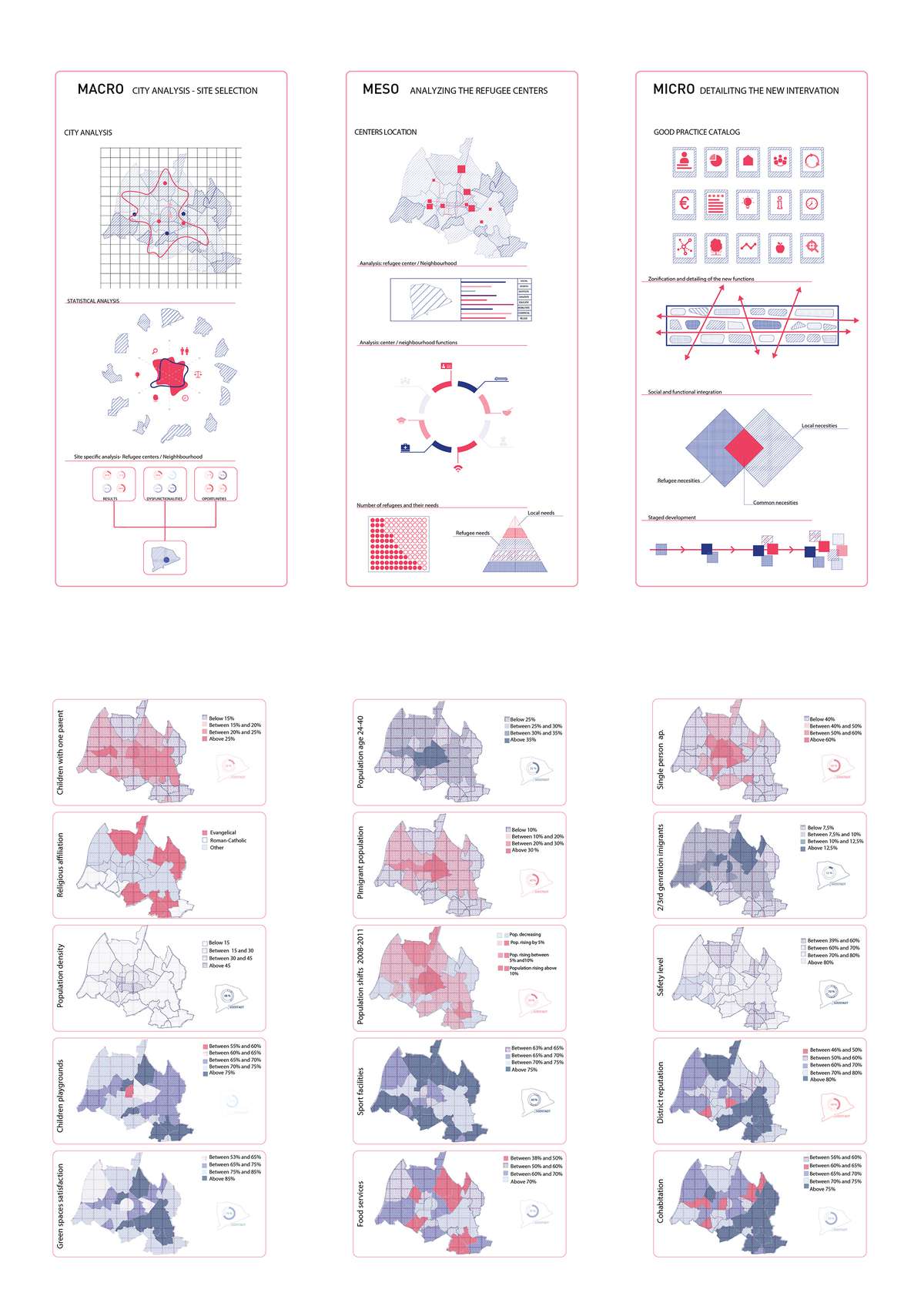
Toolkit presentation: - Macro-Meso-Micro- will result in a set of rules necessary to determine the best location for future refugee centers or to improve existing ones and their connection to their surroundings.
Macro - Detailed analysis of Karlsruhe based on local statistics, maps, current and future urban planning, local policies and on site observations. The purpose is to easily find the most suitable location for a new center and the best solution to integrated it on site.
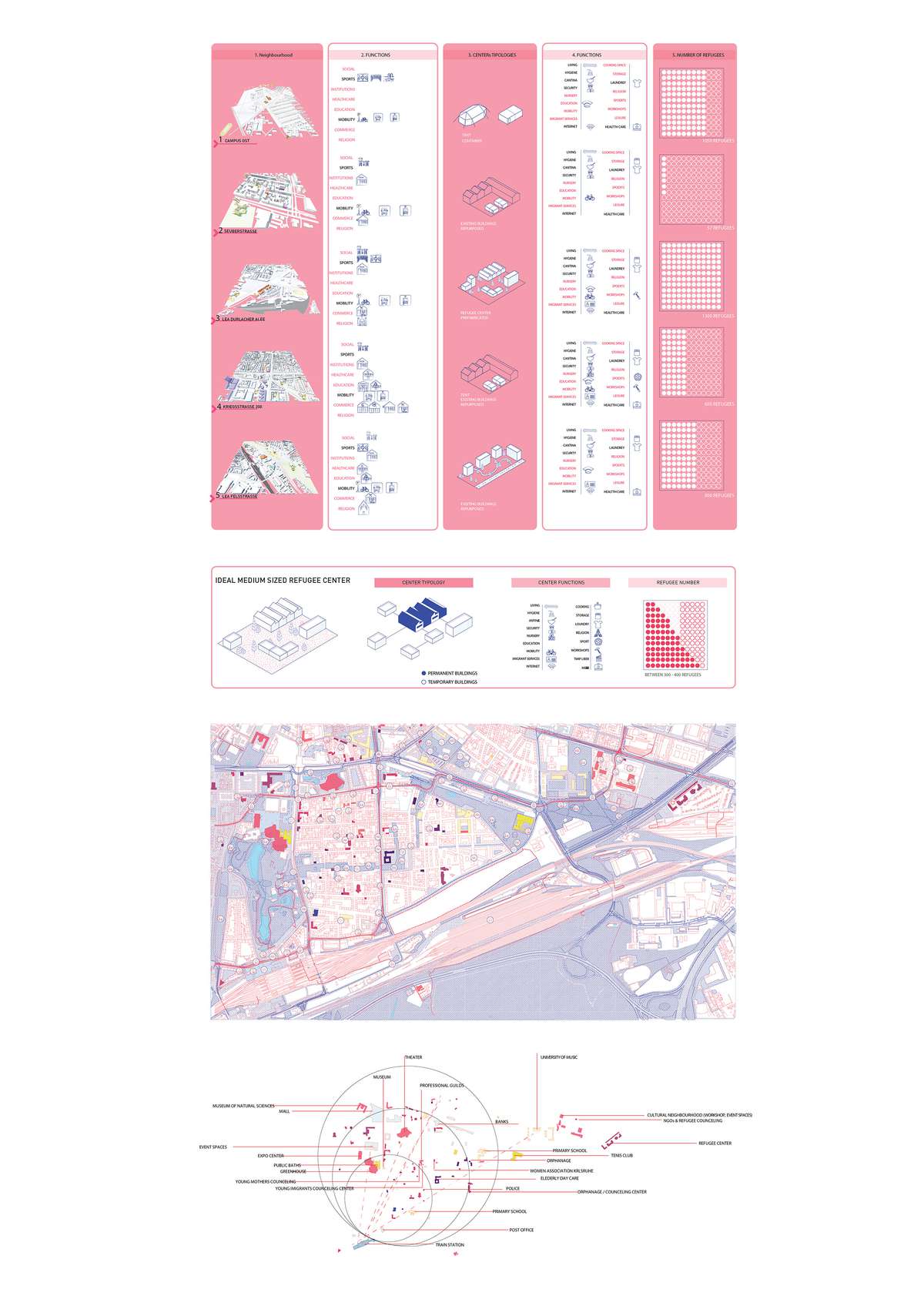
Meso:
- On site analysis of existing refugee center in Karlsruhe.
- Conclusions for the ideal refugee center with all the functional needs for a city as Karlsruhe.
Micro:
- The selected site is situated on Stuttgarter Str. for its proximity to both the main train station and LEA Durlacher Alee (the main registration center for refugees in Karlsruhe)
- The analysis has been applied on the local context to determine the best interventions that can benefit refugees and locals
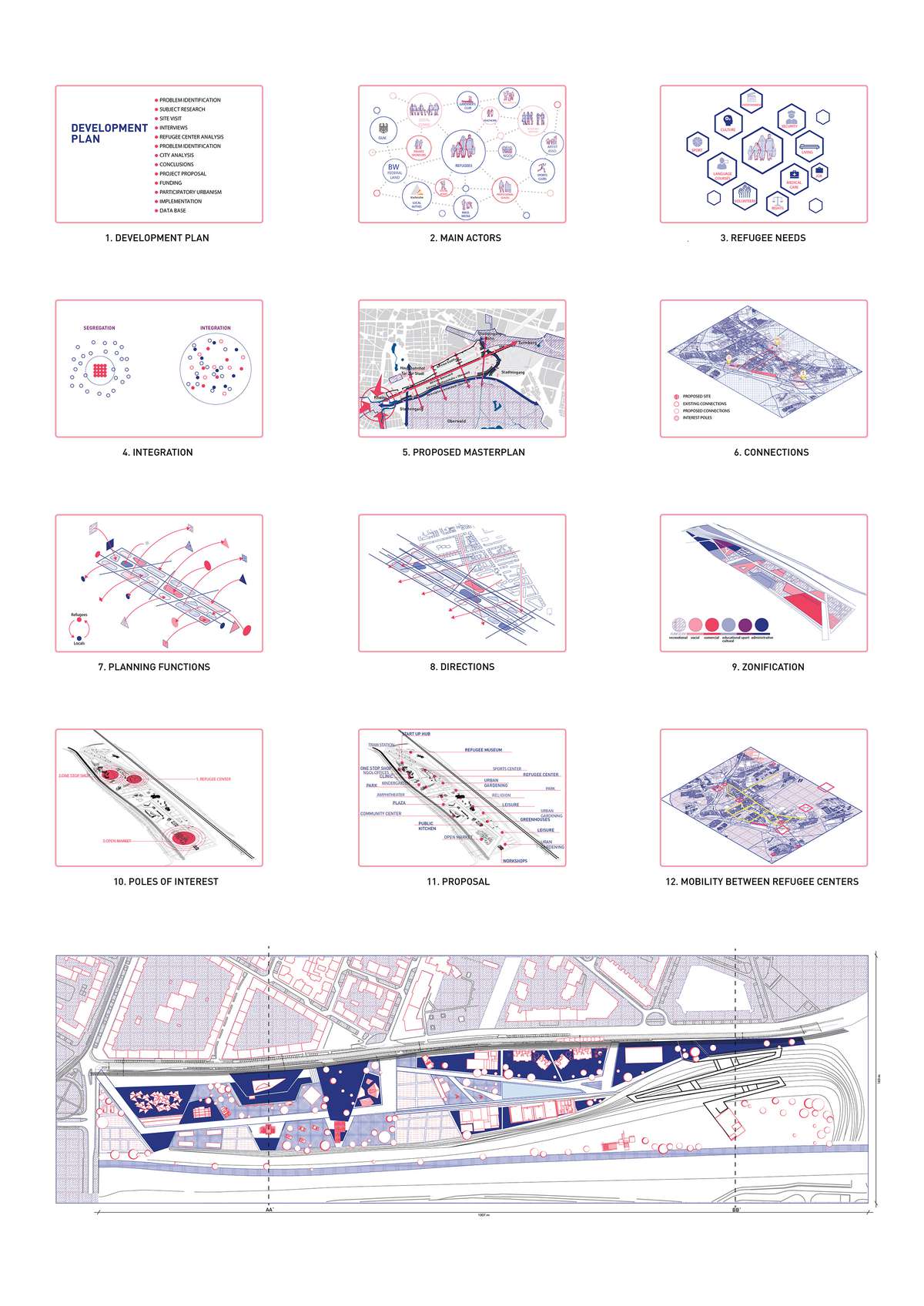
1- Development plan
- Each card from tool kit can be applied on a given site to best determine the end result.
- Implementation of the toolkit for a proposed urban hub on Stuttgarter Str. not only for refugees but for the entire city of Karlsruhe.
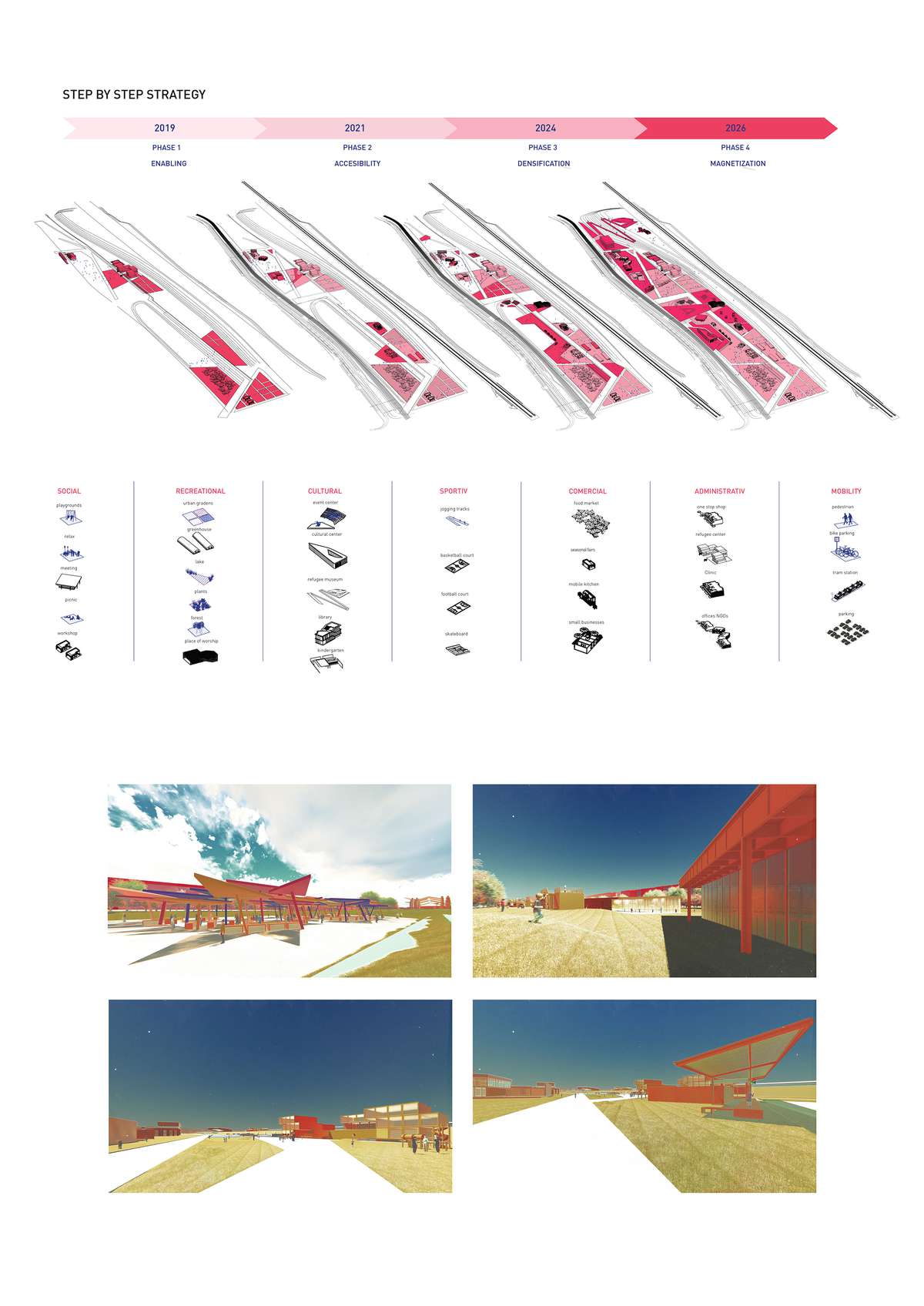
Step by step evolution for the new Urban Hub
The proposal of 3 initial permanent functions:
- Proposal for a new center ( Unaccompanied children and Single mothers )
- Offices with a tram connection where refugees can find help for all their needs
- Local market with urban gardening that can be used by refugees and locals
These pols will act as anchors for future functions both temporary (Workshops, Street food, Event space) and permanent ( Kindergarten, Startups Hub, Refugee museum)
Emergency Neighborhoods
Emergency Neighborhoods

As the world’s refugee population continues to grow, the ever increasing need for solutions to integrate them in their new adoptive communities continues to be pressing. The following proposal focuses on the issues, urban refugees face in Europe and how we can best address them not only from a housing standpoint but also from a social one.
The first part of the project consists of developing a multistage toolkit than can be easily implemented on a given city to determine the best practices for new interventions tailored towards facilitating the integration of refugees in their new local communities.
As the main study case, the city of Karlsruhe Germany has been chosen specifically because of it being one of the main arrival points for refugees in Germany during the height of the 2015 crisis.
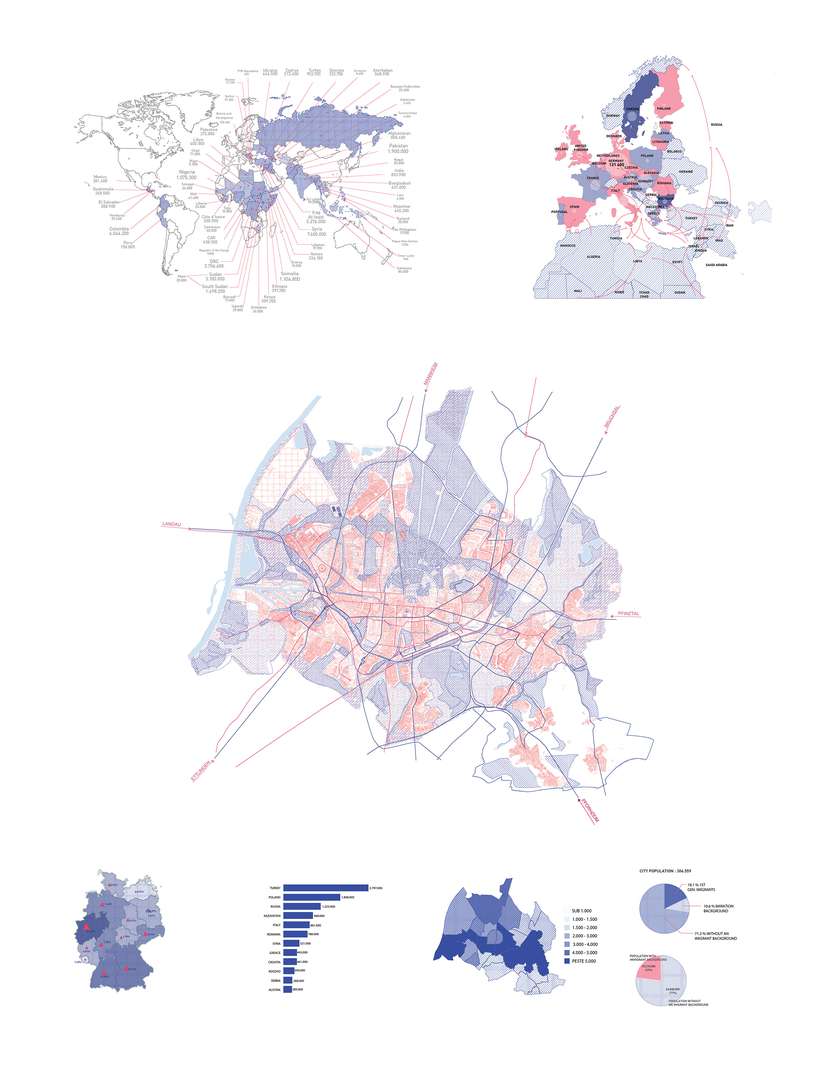
By the end of 2016 the number of forcibly displaced individuals has reached 65.6 million people with 22.5 million of refugees seeking aid in other countries. Germany is the largest recipient of asylum seeker in Europe with a total number of 1,268,845 seeking refuge inside its borders. Karlsruhe being one of the biggest receiving cities in the country.
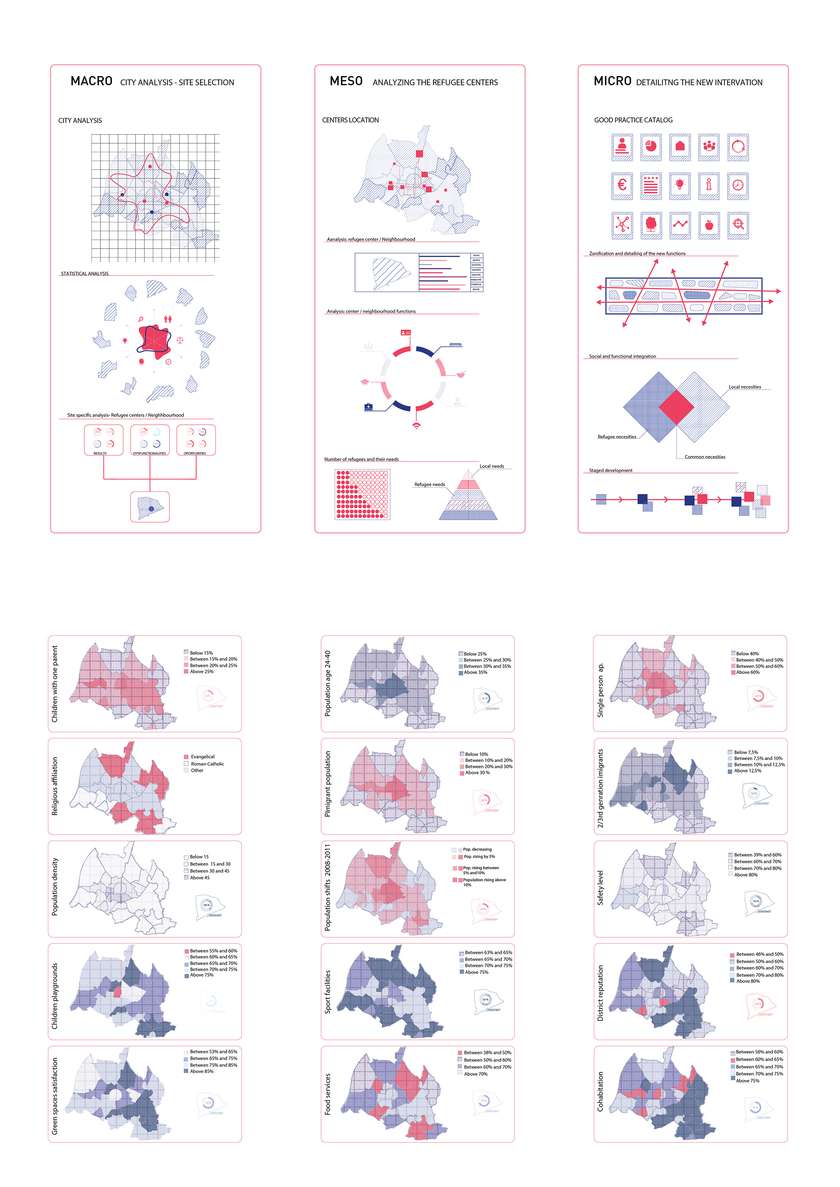
Toolkit presentation: - Macro-Meso-Micro- will result in a set of rules necessary to determine the best location for future refugee centers or to improve existing ones and their connection to their surroundings.
Macro - Detailed analysis of Karlsruhe based on local statistics, maps, current and future urban planning, local policies and on site observations. The purpose is to easily find the most suitable location for a new center and the best solution to integrated it on site.
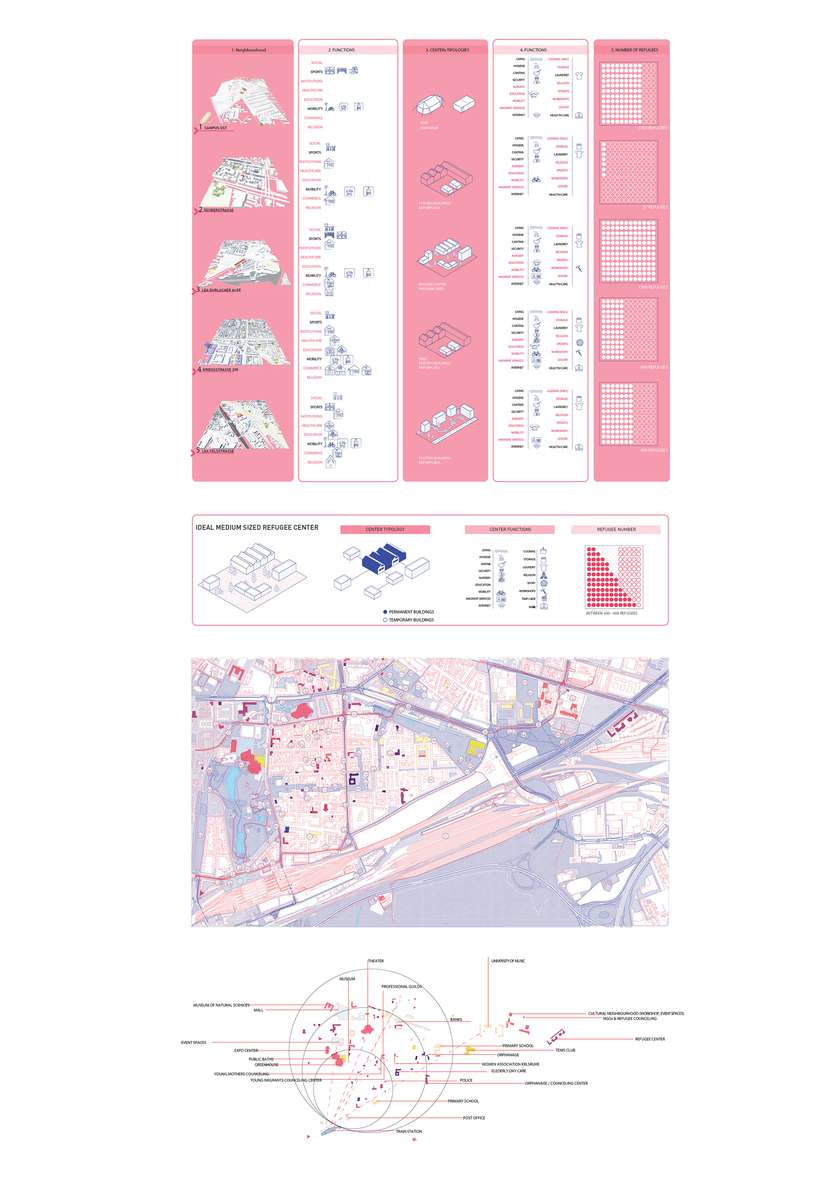
Meso:
- On site analysis of existing refugee center in Karlsruhe.
- Conclusions for the ideal refugee center with all the functional needs for a city as Karlsruhe.
Micro:
- The selected site is situated on Stuttgarter Str. for its proximity to both the main train station and LEA Durlacher Alee (the main registration center for refugees in Karlsruhe)
- The analysis has been applied on the local context to determine the best interventions that can benefit refugees and locals
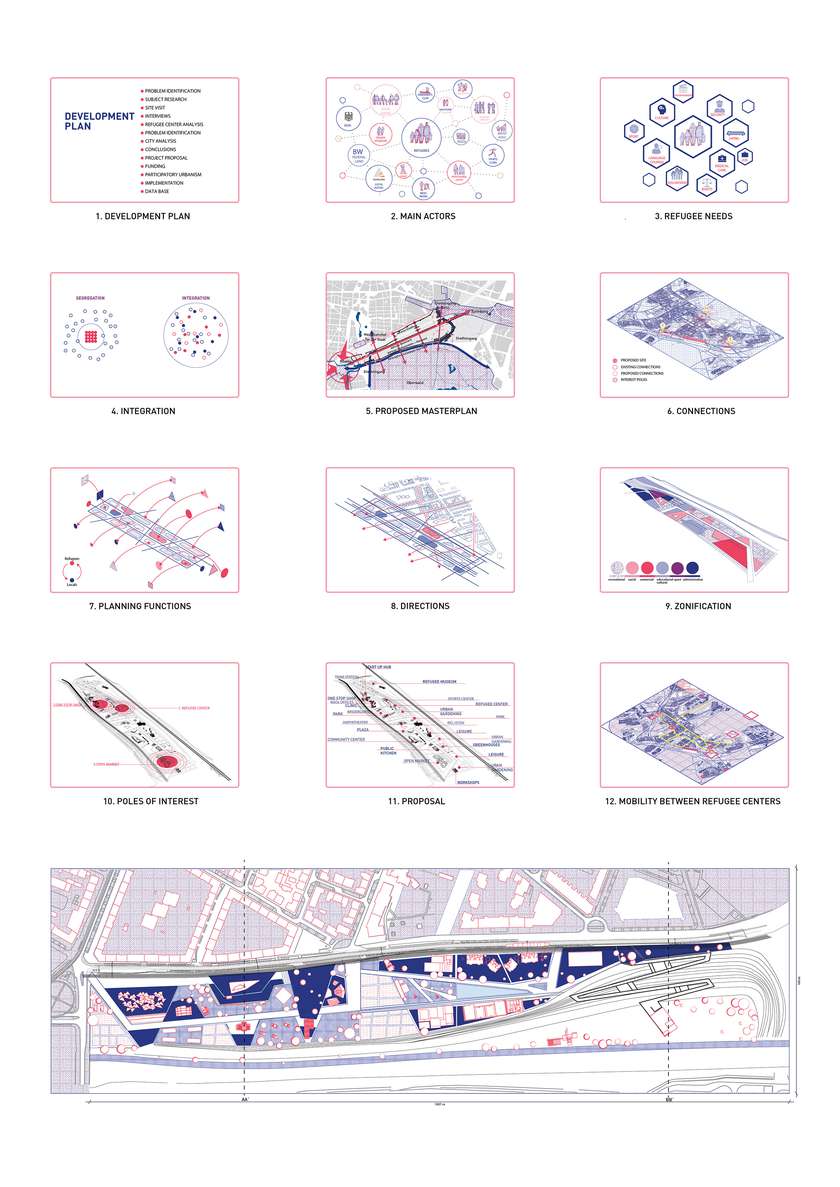
1- Development plan
- Each card from tool kit can be applied on a given site to best determine the end result.
- Implementation of the toolkit for a proposed urban hub on Stuttgarter Str. not only for refugees but for the entire city of Karlsruhe.
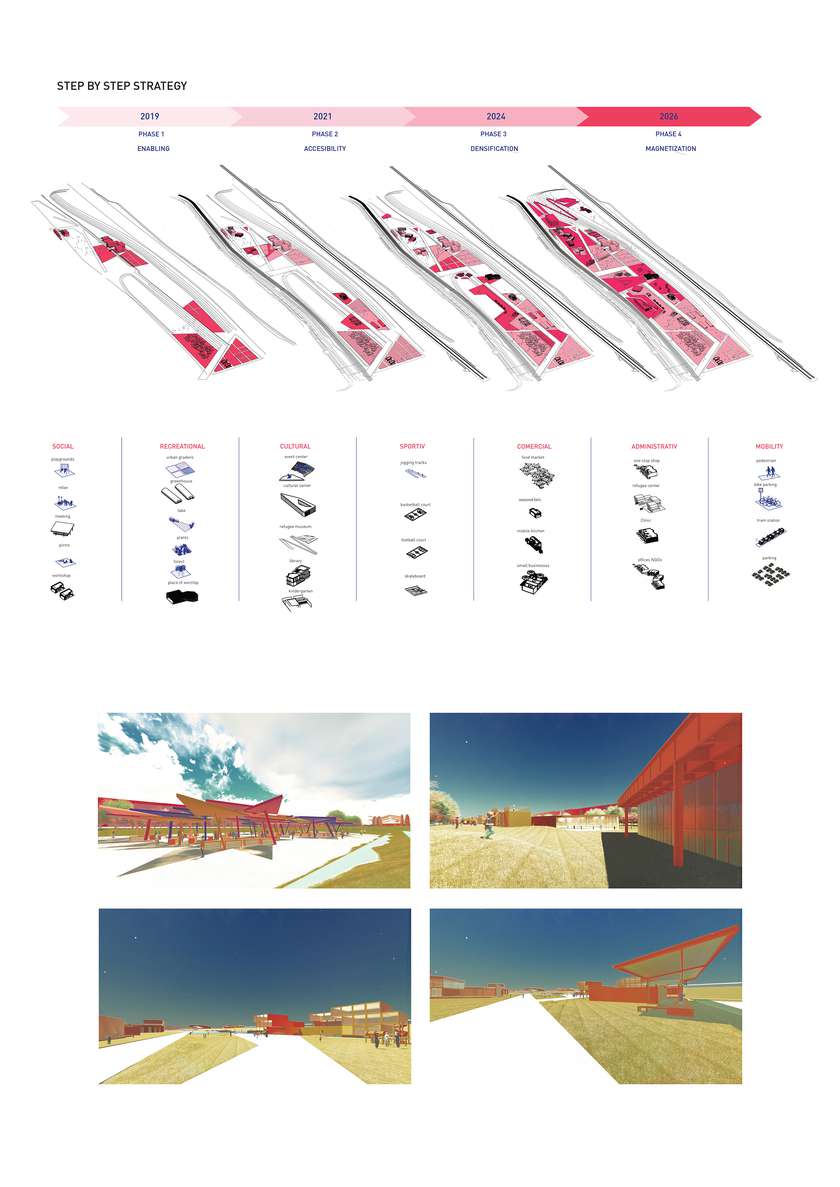
Step by step evolution for the new Urban Hub
The proposal of 3 initial permanent functions:
- Proposal for a new center ( Unaccompanied children and Single mothers )
- Offices with a tram connection where refugees can find help for all their needs
- Local market with urban gardening that can be used by refugees and locals
These pols will act as anchors for future functions both temporary (Workshops, Street food, Event space) and permanent ( Kindergarten, Startups Hub, Refugee museum)